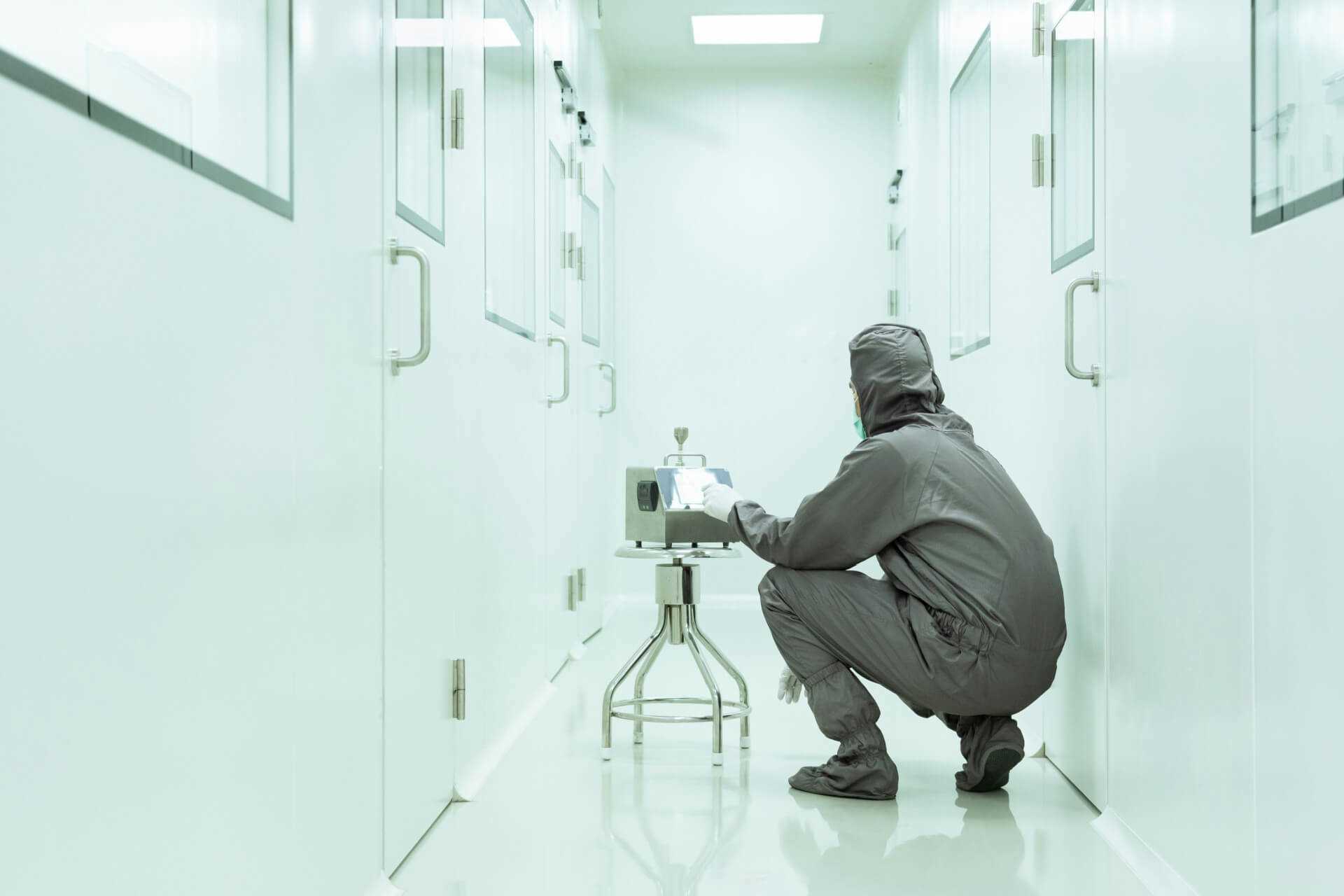
Manual Sporicide vs. iHP: A Comparison
Vibraclean has 30 years working to eliminate and sterilize cleanroom facilities across Canada and the US. In this article we will explore the best approach and guidelines to dealing with biological sterilization of spores and bacteria offering the most effective and trustworthy decontamination and fogging service in Canada and beyond.
What is a Sporicide?
A sporicide (or sporicidal agent) is a chemical disinfectant which is effective at inactivating and eliminating spore forming bacteria. Spore forming bacteria are classed as the most resistant type of microorganism to eliminate on the hierarchy of disinfection.
A spore forming bacteria is a type of bacteria which can protect itself from exposure to environmental conditions and biocides by creating a spore coat which protects it from being affected by potential inhibitory compounds. Spores can last on surfaces, or in the general environment, for long periods of time, and allow the bacteria to wait until more amenable conditions are present and then it can revert (sporulate) to its vegetative (active) state. Hence it is important to eliminate spores from the environment or else they can begin to grow again and cause widespread contamination.
- Alkylating agents (e.g., Ethylene oxide, Formaldehyde)
- Oxidizing agents (e.g., Hydrogen peroxide, Peracetic acid)
- Chlorine based agents (e.g., Sodium hypochlorite)
Of these 3 categories, oxidizing agents generally contain the safest type of sporicides to use. Agents such as formaldehyde and sodium hypochlorite are effective however, they can also be extremely destructive to equipment and general room materials.
Hydrogen peroxide is one of the easiest to use disinfectants on the market. It can be formulated in varying concentrations to be used as a low-level disinfectant, a high-level disinfectant and a sporicide.
Application of Sporicide
Application of sporicides can be performed in varying ways depending on the chemical in question and technology available to use.
Manual application
Manual application is the simplest application method in terms of required resources but does come with health and safety concerns. Manual application depends on personnel applying the liquid sporicide to surfaces sing wipes and mops. Due to the harshness of the chemicals used this will usually require personnel to wear enhanced PPE such has rubber gloves, respirators, and fully body gowns. Additionally, with the application of many sporicides an additional rinse step is required to remove the active chemical from surfaces once the required contact time has elapsed, otherwise corrosive damage can occur to equipment and materials.
One major advantage to manual application of sporicide is that you don not have to control your cleanroom’s HVAC system as circulating air will not impact the effectiveness of the sporicide as long as surfaces are kept wet for the required contact time.
Spraying/Misting/Gassing
Depending on the physical/chemical properties of the sporicide you are using, aerosolized application can either be called spraying, misting, fogging, or gassing. For ease of explanation, we will cover all types by using fogging going forward.
Application of sporicide by fogging utilizes the gaseous properties of the chemical, allowing it to penetrate the smallest openings and corners withing your cleanroom. This increases the effectiveness of the sporicide in attacking and destroying spores which may be present. However, when using a fogging method, you must ensure that your cleanroom can be sealed off to prevent leaks and that you can switch off your HVAC system so that circulating air does not dilute and/or remove the sporicide from the space too early. Additional technology can further enhance the effectiveness of the sporicide such as Binary Ionization Technology (BIT) which is used to produce ionized hydrogen peroxide.
Ionized Hydrogen Peroxide (iHP)
iHP is a relatively new application method for hydrogen peroxide. With this method a stream of hydrogen peroxide is sprayed across a high voltage plasma arc which ionizes the hydrogen peroxide, breaking the H2O2 molecule into reactive oxygen species (ROS) such as hydroxyl radicals increasing the oxidizing effects of the agent. This increases the likelihood of lysing and eliminating any spores in the environment.
The use of iHP has many advantages over manual application of sporicide and fogging using other chemicals.
| Considerations | IHP | Manual | Fogging using other chemicals (e.g Formaldehyde) |
| Ease of application | Medium | Easy | Difficult |
| Personnel required | 1-2 | Dependent on room size | 1-2 |
| Application length | 2 hours | Dependent on room size and number of personnel | Dependent on chemical. Can be 6-12 hours |
| Monitoring of process | Chemical indicators available | Not available | Chemical indicators available for some types |
| Ease of validation | Easy. Ability to validate process for each space it is needed. | Difficult | Easy |
| Major PPE required | Respirator | Respirator and rubber gloves | Respirator and rubber gloves |
| Health & Safety Concerns | Minimal. IHP breaks down into water and oxygen. | Minimal (However rinse step required) | High |
| HVAC Control required | Yes | No | Yes |
| Temperature/Humidity control required | No | No | Yes |
| Sterility Assurance Level | 10-6 | Dependent on application by personnel | 10-6 |
| Repeatability | High | Medium (Dependent on personnel) | High |
iHP: The Future of Fogging
From Table 1 you can see that iHP is relatively easy to employ. It is safe, has minimal labour requirements, can be validated, and can achieve a SAL of 10-6.
The major consideration which would impact the use of iHP in a space is whether the cleanrooms HVAC system can be properly controlled or shut off. If the air cannot be turned off, then iHP would be unable to work.
